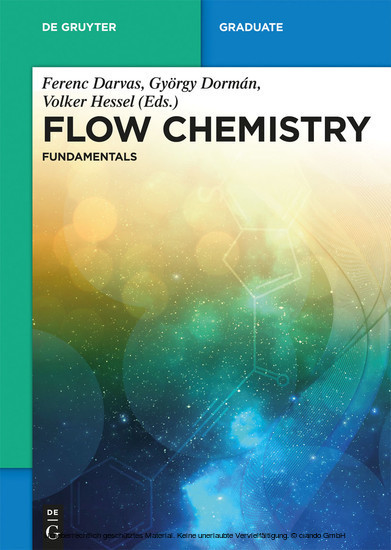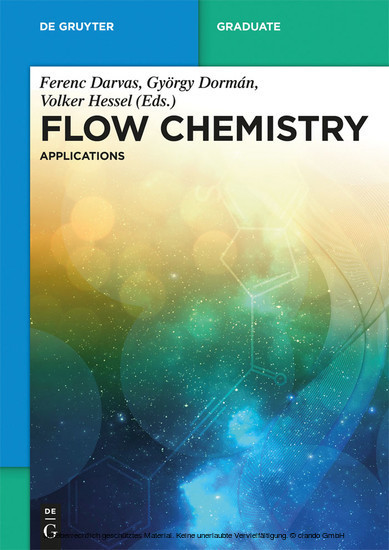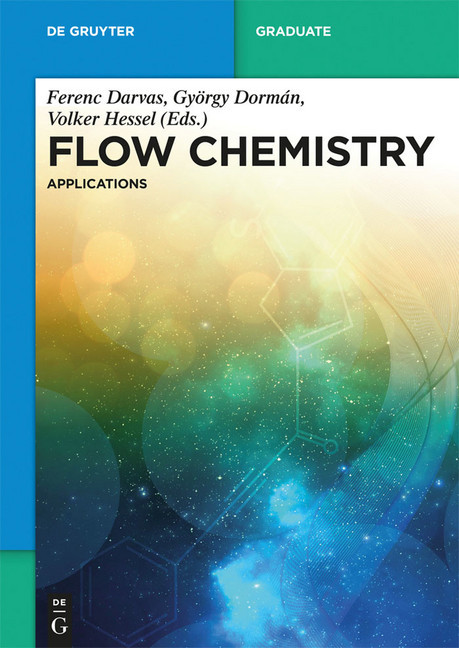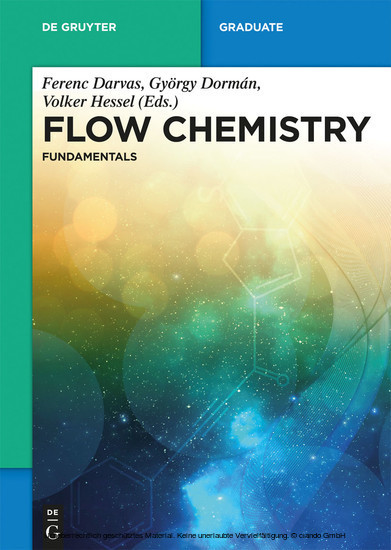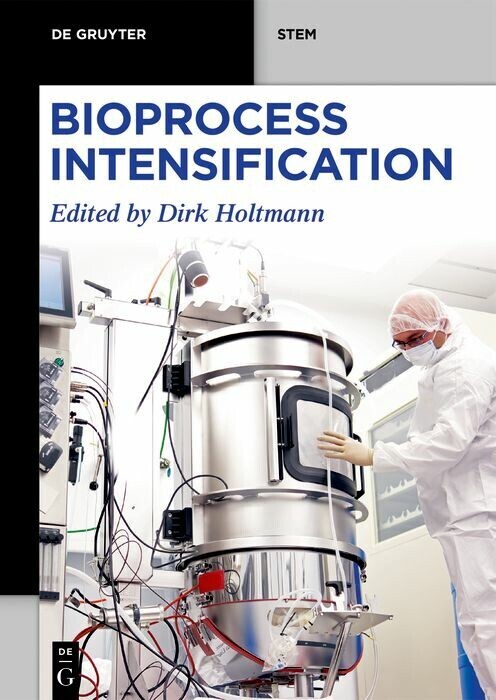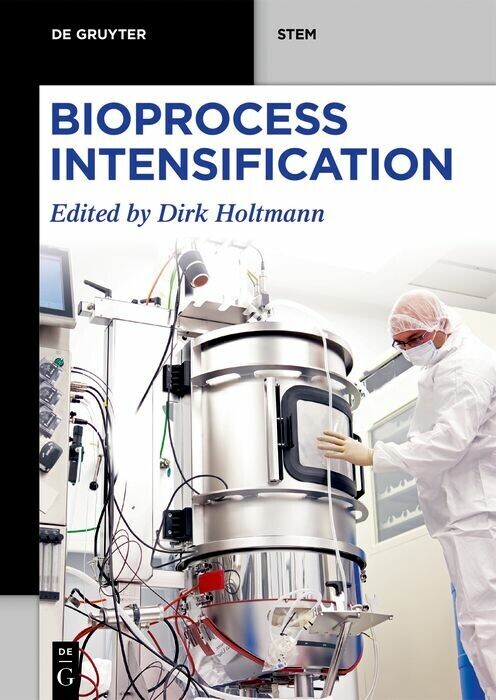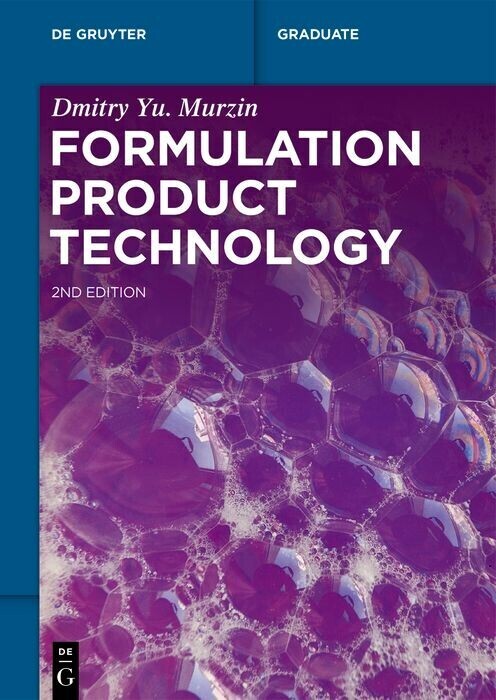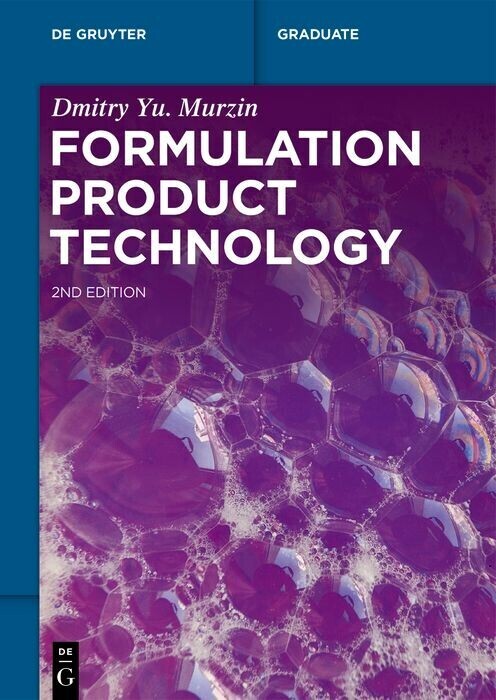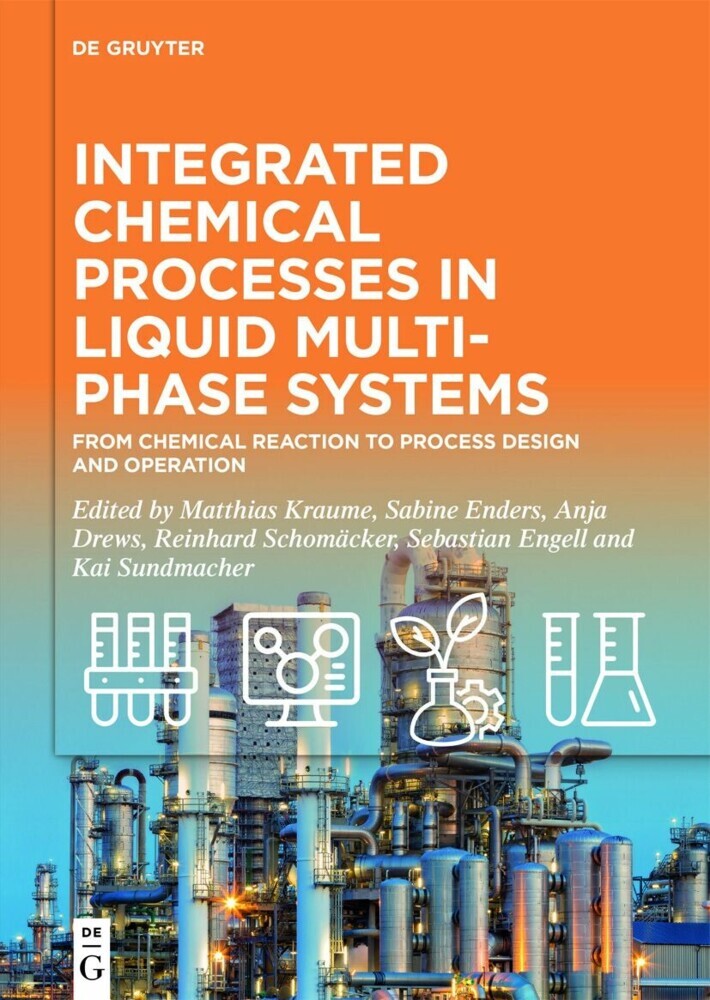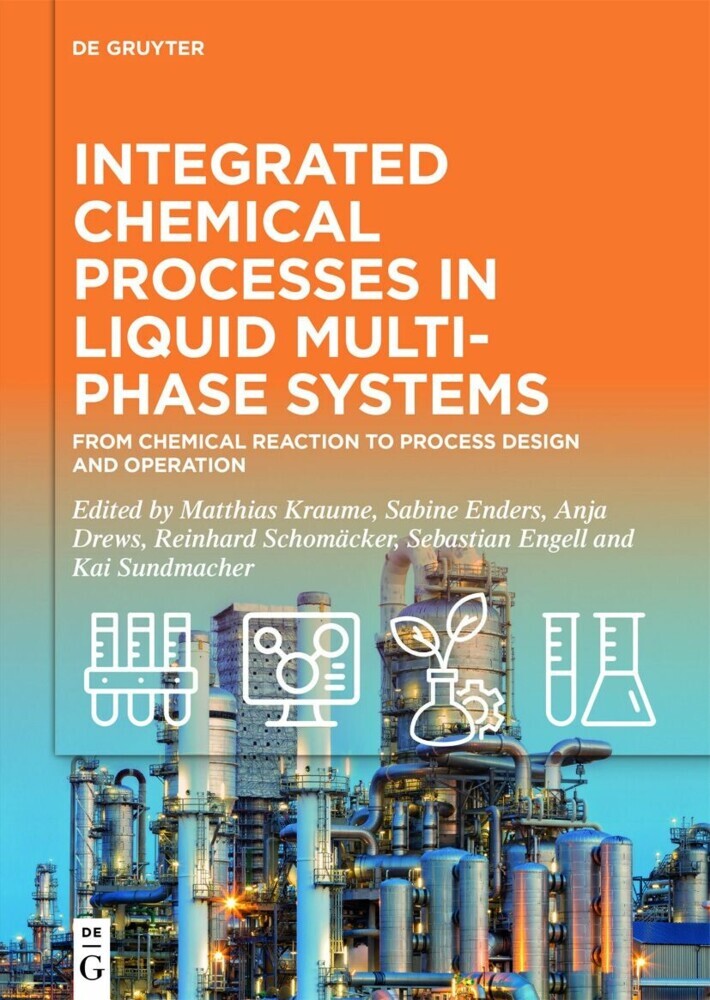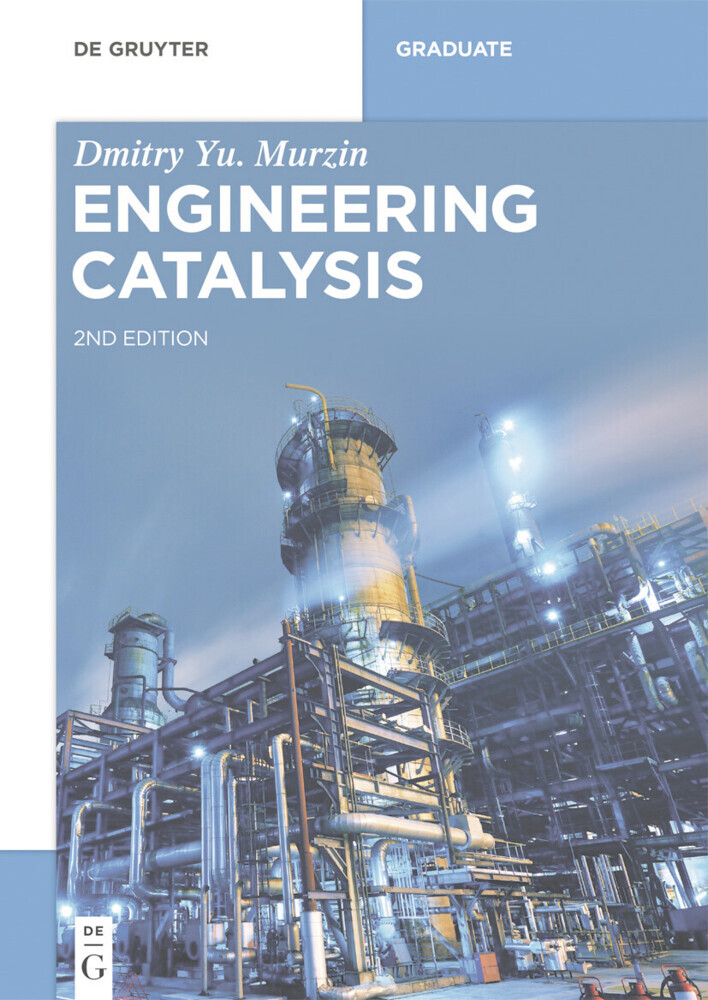Fundamentals
Fundamentals
Broader theoretical insight on organic reactions in driving them automatically opens the window towards new technologies particularly to flow chemistry. This emerging concept promotes the transformation of present day's organic processes into a more rapid continuous set of synthesis operations, more compatible with the envisioned sustainable world. Our book provides a comprehensive discussion on the theoretical foundation of flow chemistry.
Ferenc Darvas, Florida Int.Uni., Miami, USA; Volker Hessel, TU Eindhoven,The Netherlands; György Dorman, ThalesNano, Budapest, Hungary
1;Preface;5 2;About the editors;13 3;Abbreviations;17 4;Part I Introduction and outlook;19 4.1;1 Introduction and outlook;21 5;Part II Theoretical foundations;25 5.1;2 Fundamentals of Flow Chemistry;27 5.1.1;2.1 Fundamentals of chemical reactions;27 5.1.1.1;2.1.1 Thermodynamic requirements for reaction;27 5.1.1.2;2.1.2 Kinetic requirements for a reaction;28 5.1.1.3;2.1.3 Reaction order and kinetics;30 5.1.1.4;2.1.4 Diffusion control;31 5.1.1.5;2.1.5 Kinetic versus thermodynamic control;31 5.1.1.6;2.1.6 Competing reactions;33 5.1.1.7;2.1.7 Initiation and termination of chemical reactions;33 5.1.1.8;2.1.8 Exotherm and endoterm reactions;34 5.1.1.9;2.1.9 How to accelerate an organic chemical reaction. Shifting the equilibrium towards product formation;34 5.1.2;2.2 Batch versus flow reactions;38 5.1.2.1;2.2.1 Performing chemical reactions in batch and flow;41 5.1.2.2;2.2.2 Multistep reactions in batch and flow;44 5.1.2.3;2.2.3 The dimensions of batch (flask) and flow (micro) reactors;44 5.1.2.4;2.2.4 Mixing in batch versus microreactors;45 5.1.2.5;2.2.5 Mass transfer in batch and flow;46 5.1.2.6;2.2.6 Temperature control in batch and flow;47 5.1.2.7;2.2.7 Heterogeneous catalytic reactions in batch and flow;50 5.1.3;2.3 Introduction to the basics of microfluidics;52 5.1.3.1;2.3.1 Electroosmotic (electrokinetic) flow (EOF);52 5.1.3.2;2.3.2 Hydrodynamic (pressure-driven) pumping;54 5.1.3.3;2.3.3 Segmented flow;55 5.1.3.4;2.3.4 Centrifugal pumping;56 5.1.3.5;2.3.5 Laminar and turbulent flow regimes, the Reynolds number;56 5.1.3.6;2.3.6 Axial dispersion versus radial dispersion (Bodenstein and Peclet Numbers);59 5.1.3.7;2.3.7 Mixing versus reaction rate-Damköhler Number;59 5.1.3.8;2.3.8 Heat transfer in flow;60 5.1.3.9;2.3.9 Flow rates in microreactors;61 5.1.4;2.4 Microreactors in general;62 5.1.4.1;2.4.1 General properties of flow reactors;62 5.1.4.2;2.4.2 Major flow reactor configurations;65 5.1.5;2.5 Essentials of reaction planning and realization in continuous flow;67 5.1.5.1;2.5.1 Classification of chemical reactions based on reaction kinetics;67 5.1.5.2;2.5.2 Flash chemistry;68 5.1.5.3;2.5.3 High-resolution reaction time control;69 5.1.5.4;2.5.4 Novel process windows;70 5.1.5.5;2.5.5 Process intensification;73 5.2;3 Principles of controlling reactions in flow chemistry;77 5.2.1;3.1 Introduction;77 5.2.2;3.2 Reactions in a flow microreactor;77 5.2.2.1;3.2.1 Reaction time in a batch reactor;77 5.2.2.2;3.2.2 Residence time control in a flow reactor;78 5.2.2.3;3.2.3 Why micro?;80 5.2.3;3.3 High-resolution reaction time control of reactions in flow;86 5.2.3.1;3.3.1 The principle;86 5.2.3.2;3.3.2 Example 1: Phenyllthiums bearing alkoxycarbonyl groups;88 5.2.3.3;3.3.3 Temperature-residence time map;90 5.2.3.4;3.3.4 Example 2: Control of isomerization. Aryllithiums bearing a nitro group;94 5.2.4;3.4 Space integration of reactions;95 5.2.4.1;3.4.1 The concept;95 5.2.4.2;3.4.2 Example 3: Synthesis of disubstituted benzenes from dibromobenzene;96 5.2.4.3;3.4.3 Example 4: Synthesis of TAC-101;97 5.2.4.4;3.4.4 Linear integration and convergent integration;98 5.2.4.5;3.4.5 Example 5: Synthesis of unsymmetrically-substituted photochromic diarylethenes. Convergent integration;99 5.2.4.6;3.4.6 Example 6: Integration of lithiation and cross-coupling;100 5.2.4.7;3.4.7 Example 7: Anionic polymerization of styrene and synthesis of block copolymers with a silicon core;103 5.2.4.8;3.4.8 Example 8: Anionic block copolymerization of styrene and methyl methacrylate;106 5.2.5;3.5 Summary;107 5.3;4 Technology overview/Overview of the devices;113 5.3.1;4.1 General aspects;113 5.3.2;4.2 Pumps for liquid handling;114 5.3.2.1;4.2.1 Syringe pump;114 5.3.2.2;4.2.2 Piston pump;115 5.3.2.3;4.2.3 Other pumps;116 5.3.3;4.3 Mass-flow controllers;117 5.3.4;4.4 Heating/cooling of the reaction zone;117 5.3.5;4.5 Back-pressure regulators;118 5.3.6;4.6 Mixers;119 5.3.6.1;4.6.1 Modular mixers;120 5.3.6.2;4.6.2 In-line mixers;121 5.3.7;4.7 Reactors;123 5.3.7.1;4.7.1 Coil re
Darvas, Ferenc
Hessel, Volker
Dorman, György
| ISBN | 9783110388756 |
|---|---|
| Artikelnummer | 9783110388756 |
| Medientyp | E-Book - ePUB |
| Copyrightjahr | 2014 |
| Verlag | Walter de Gruyter GmbH & Co.KG |
| Umfang | 313 Seiten |
| Sprache | Englisch |
| Kopierschutz | Digitales Wasserzeichen |

